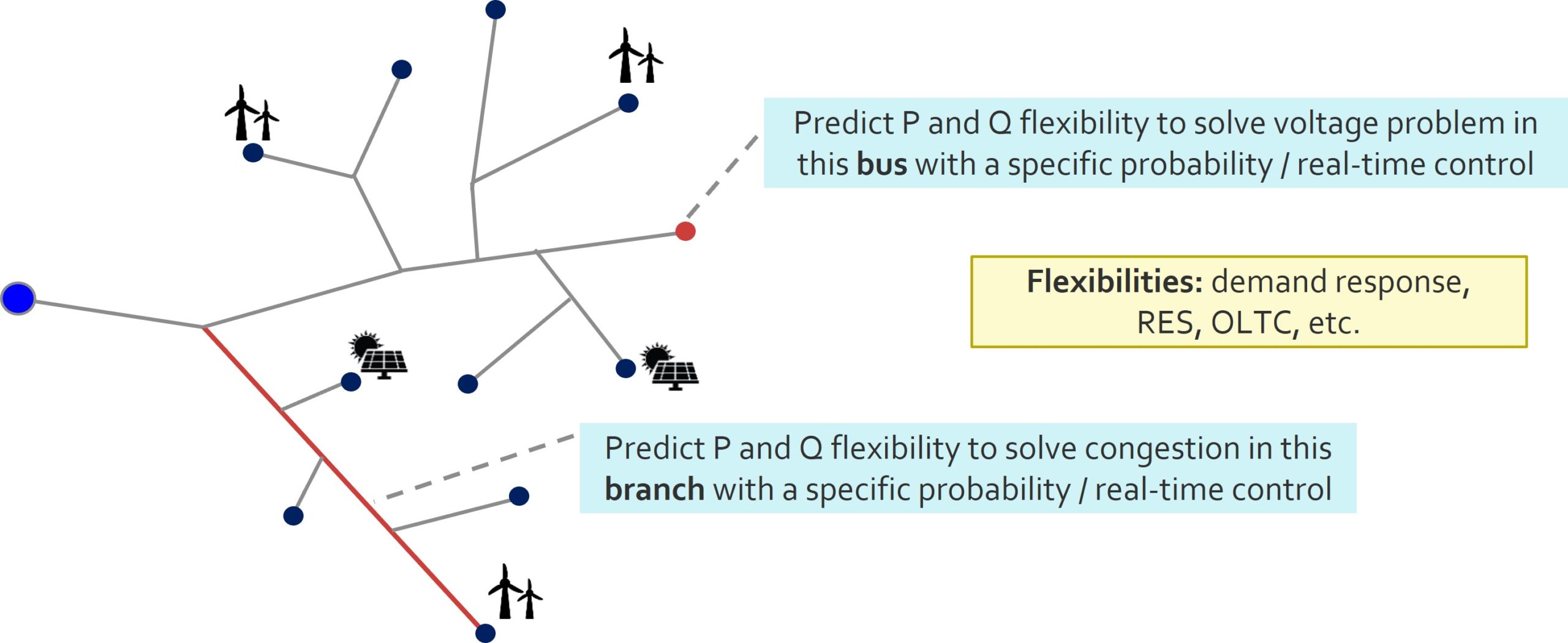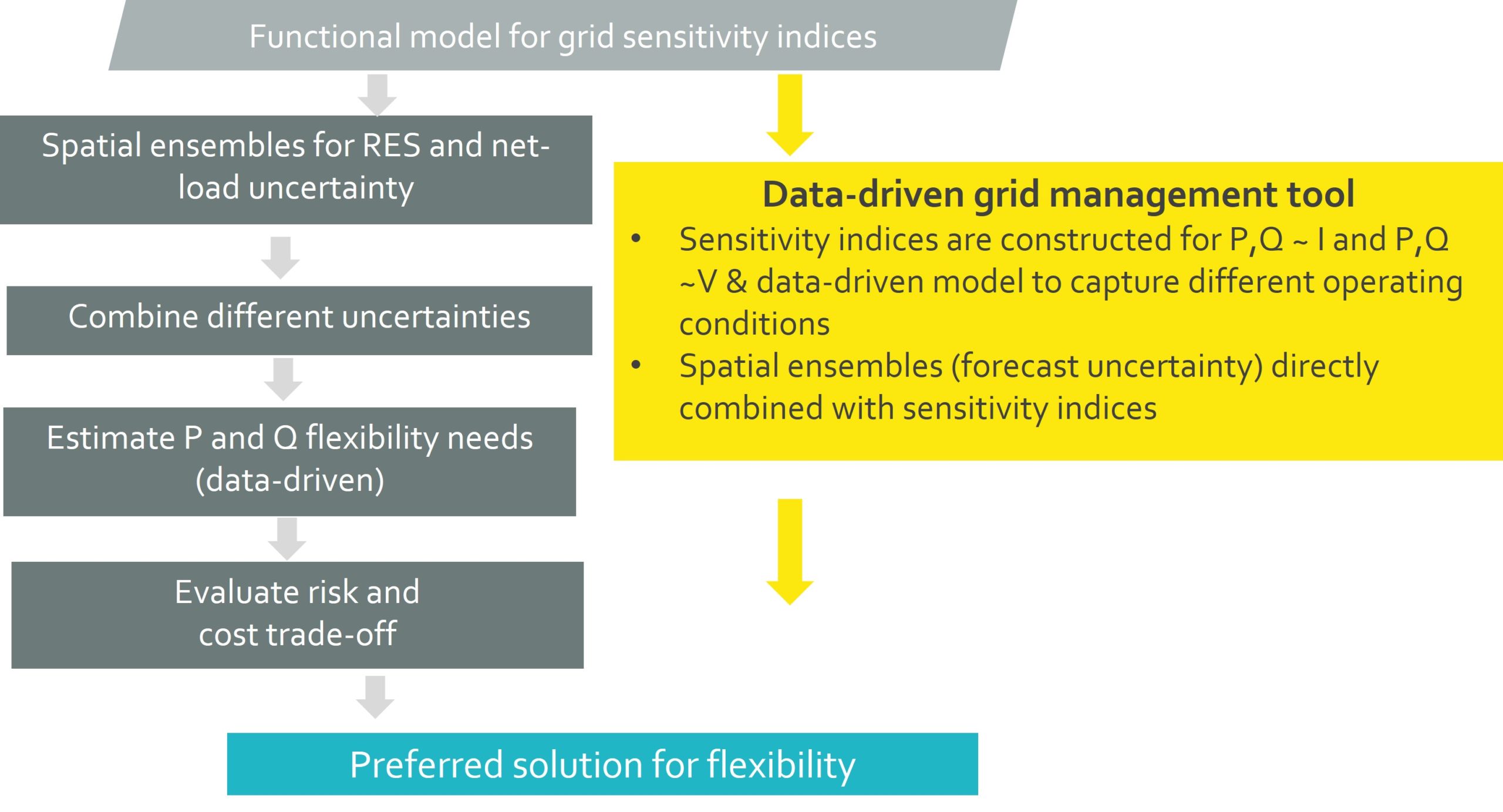Predictive Flexibility Management for Voltage and Congestion Management
Localized and predictive management of voltage and congestion problems in electrical grids
Partner: INESC TECActors involved: Forecasting Services Provider, Distribution System Operator, Transmission System Operator, Flexibility Operator, Distributed Energy Resources (DER)
Context |
The context of this use case is the predictive management of electrical grids considering flexibility from distributed energy resources and the impact of forecast uncertainty from renewable energy and load, aiming at solving the technical constraints of the electrical grid (management and voltage control).
Summary |
This use case corresponds to a multi-criteria decision-aid method divided in three main phases:
-
- Modelling of electrical grid sensitivities and uncertainties.
- Data-driven learning of sensitivity indices and extraction of metrics characterizing the risk of congestion and voltage problem in each network bus and branch. With this information, a “causality” tree is constructed to relate each flexible resource (DER, network topology, OLTC) with the technical problem and allow the human operator to understand the full range of available control actions and effectiveness of each one.
- Ranking of flexible resources and construction of a multi-criteria decision-aid problem where the decision-maker balances risk (of constraint violation) and costs (of purchasing flexibility) to make a final decision about flexibility activation.
Flexibility is here defined as active and reactive power modulation in the grid nodes (available via a specific market mechanism), which can be from distributed generation, demand response, storage (operated by a third-party), etc., aggregated or not by market players.
Challenge |
How to integrate forecast uncertainty in electrical grid management by adopting a local and data-driven methodology?

Today, the state-of-the-art consists in stochastic and robust optimization methods with low interpretability to decision-makers and high computational time.
Approach |
Predictive management of grid constraints with sensitivity indices.
Innovative content of forecasting solution
The main innovation is interpretability and fast decision-making to human operators, i.e. no need to run stochastic or robust optimization problems. The final decision in terms of flexibility activation corresponds to an evaluation the cost (of purchasing flexibility) and risk (of constraint violation) associated to flexibility management. The typical representation of uncertainty by ensembles (statistically or physically based) is explored, but instead of integrating the ensembles in stochastic optimization, a localized (i.e., with sensitivity indices) and data-driven approach is used to combine different uncertainties and formulate a multi-criteria decision-making problem where the human operator can explore the different flexibility options and understand how effective they are in reducing the risk of technical problems.
| KPI | Fulfilement of voltage limits and branch current limits |

